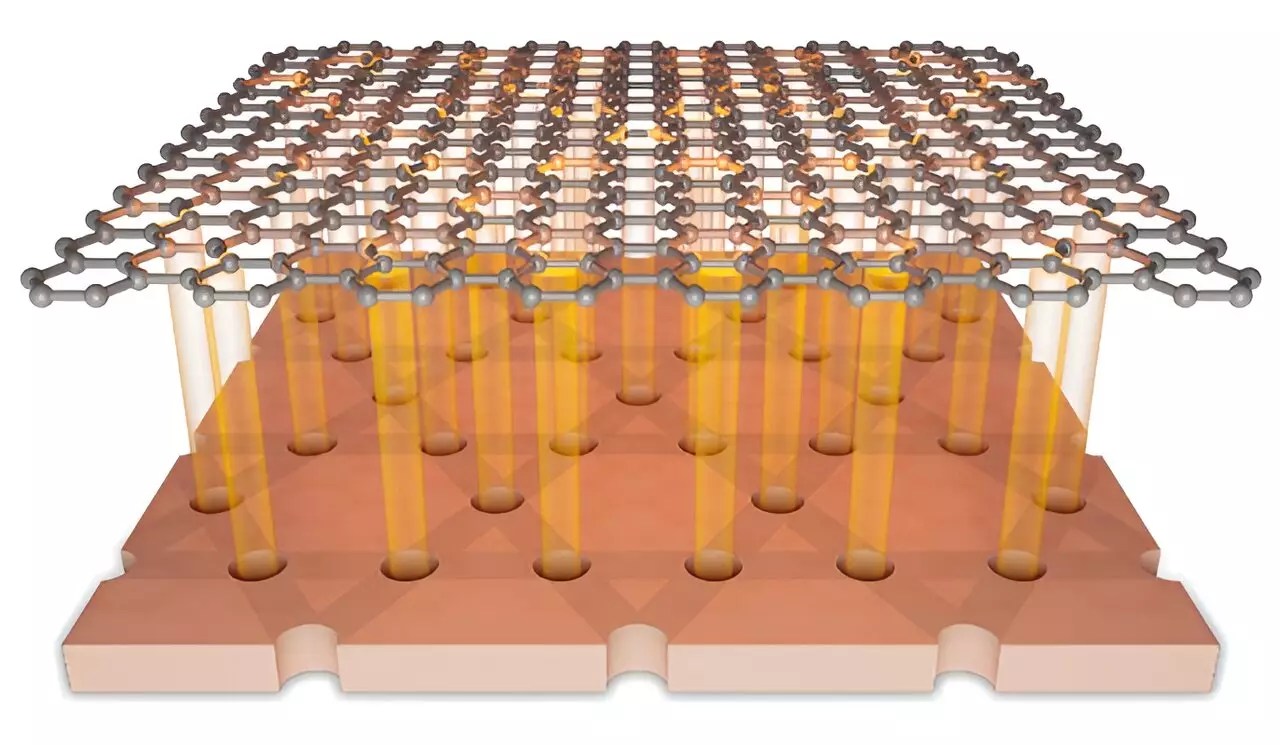Recent advancements in the manipulation of electronic properties within two-dimensional materials have captured considerable attention, particularly in the realm of graphene, a material renowned for its exceptional electrical, thermal, and mechanical properties. A pivotal study published in *Physical Review Letters* elucidates an innovative approach to tuning the electronic band structure of graphene using an artificial kagome superlattice. Traditionally, methods such as heterostructures and interfacial strain have presented challenges in offering real-time and continuous control over band structures. This article explores the implications of the research findings and highlights the transformative potential of this new tuning method.
Historically, engineering the band structure of materials has relied on conventional techniques, including heterostructures, alloying, and the application of strain. Such methods, while effective in specific contexts, often fall short of providing the flexibility required for in situ adjustments. Most notably, they do not allow for the real-time, selective adjustment of electronic properties that can lead to the discovery of new physical phenomena. The introduction of van der Waals materials has transformed this landscape, allowing researchers to explore novel phases of matter and enhanced functionalities through the manipulation of band structures.
The Approach: Kagome Superlattice Innovativeness
The research led by Prof. Zeng Changgan and his collaborators fundamentally alters the band engineering paradigm. By implementing a kagome superlattice with a substantial periodicity of 80 nm, the study enables the manipulation of Dirac bands in graphene. This approach is groundbreaking, as it compresses high-energy band structures into a regime where they can be effectively tested and examined. The creation of the kagome superlattice is not merely an aesthetic design; it is a strategic move that permits intricate control over electron dispersion characteristics, facilitating the fine-tuning of graphene’s electronic properties.
A notable aspect of the research resides in the incorporation of a high-order potential within the superlattice framework. This sophisticated technique allows for intricate adjustments and reconstructions of band structures, leading the way for selective dispersion modulation. The researchers employed well-established fabrication techniques like van der Waals assembly and electron beam lithography to produce the kagome lattice pattern, which serves a dual purpose; it acts as a local gate while also interacting dynamically with the graphene layer.
By varying the voltage levels applied to the local gate and the associated doped silicon substrate, the team demonstrated remarkable control over both the artificial potential and the carrier density in graphene. This method is not just an incremental improvement over previous strategies but represents a significant evolution in the field of band structure manipulation.
One of the remarkable findings of this study is the role of magnetic fields in modulating electronic properties. The application of a magnetic field was observed to diminish the influence of the superlattice on the band structure, reactivating intrinsic Dirac bands within graphene. This insight introduces an additional parameter for research and application, enabling further exploration into the electronic behavior of materials under varying conditions.
Such a multi-faceted approach not only elevates the control researchers have over electronic properties but also sets the stage for the exploration of new, previously inaccessible phenomena. As the landscape of materials engineering continues to evolve, the implications of this research could initiate a wave of innovations aimed at developing advanced electronic devices with tailored functionalities.
This pioneering research highlights a significant leap forward in the field of materials science. By utilizing an artificial kagome superlattice, the team has unveiled a method that dramatically improves the control over the electronic properties of graphene. This novel technique not only enriches the existing toolkit for band structure engineering but also lays the groundwork for broader explorations in the development of new materials with unique functionalities. As the collaboration continues between institutions like USTC, Wuhan University, and IMDEA Nanociencia, we can anticipate future breakthroughs that will undoubtedly redefine our understanding of material properties and their applications.

